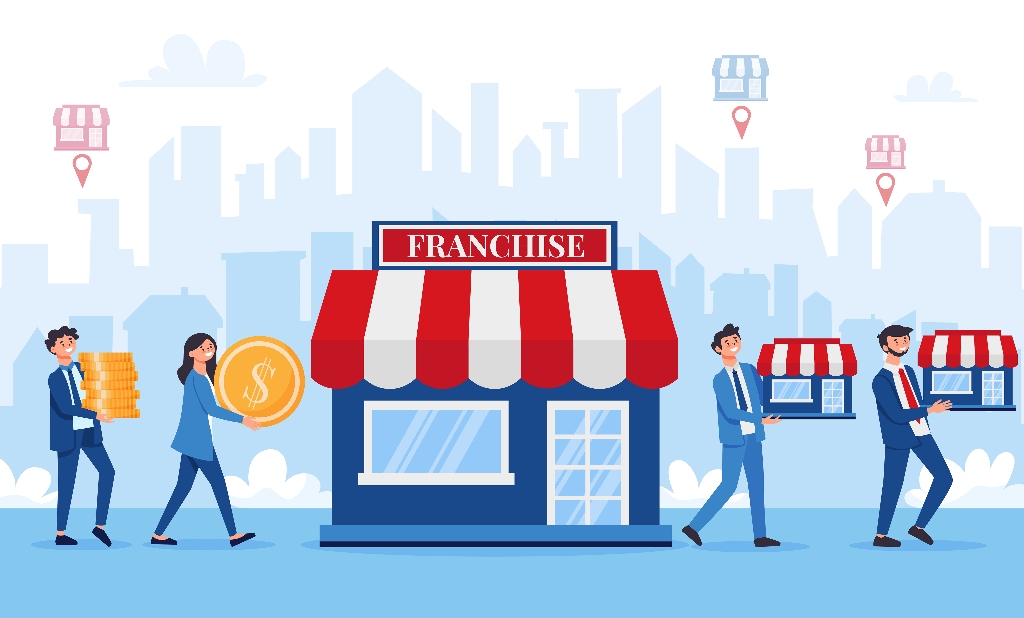XIMIVOGUE Insights on How to Start a Department Store Franchise on a Budget
Author: Celia| Keywords chosen by Celia
As we move through 2025, department store franchises represent one of the most accessible entry points for entrepreneurs looking to enter the retail sector without the complexity of building a brand from scratch.
At XIMI-V, with our extensive experience in lifestyle retail and the successful XIMI-V franchise model across multiple international markets, we've witnessed firsthand the transformative potential of well-structured department store franchises.
Understanding Department Store Franchise Cost in 2025
When evaluating the cost of starting a department store franchise, the investment landscape has become increasingly diverse and accessible. Current market analysis reveals that affordable department store franchise options now range from $25,000 for smaller format stores to $150,000 for comprehensive retail concepts. The department store franchise cost in 2025 varies significantly based on several key factors.
Budget-friendly franchise models typically require initial investments between $25,000-$75,000, making them attractive for first-time franchise owners. These affordable grocery and department store franchise options often focus on essential goods and streamlined operations. Mid-tier franchises, ranging from $75,000-$150,000, offer expanded product lines and enhanced support systems. Premium franchises may exceed $200,000 but provide comprehensive turnkey solutions.

Department store franchise financing options available have expanded considerably, with many franchisors now offering in-house financing, equipment leasing programs, and partnerships with specialized lenders.
Location significantly impacts costs, with the best department store franchise locations in high-traffic areas commanding premium investments. However, emerging suburban markets and secondary cities often present more budget-conscious opportunities without sacrificing profitability potential.
Steps to Invest in a Successful Department Store Franchise
The journey of how to open a department store franchise in any location follows a structured process that maximizes success potential while minimizing risks. Top department store franchise brands for beginners typically provide comprehensive roadmaps that guide new franchise owners through each critical phase.
Step 1: Market Research and Self-Assessment - Evaluate local market conditions, competition, and your personal qualifications against department store franchise requirements. This phase should include financial preparation and location scouting.
Step 2: Franchise Selection and Due Diligence - Research profitable department store franchise ideas with low investment that align with your budget and market conditions. Request franchise disclosure documents and conduct a thorough financial analysis of potential returns.

Step 3: Application and Approval Process - Submit detailed applications including business plans, financial statements, and references. Top-performing department store franchise brands maintain selective approval processes to ensure franchisee success.
Step 4: Training and Setup - Engage with a turnkey department store franchise with training programs that cover operations, inventory management, customer service, and marketing. Many franchisors provide department store franchises with marketing support that continues throughout the relationship.
Step 5: Grand Opening and Ongoing Operations - Launch with comprehensive support systems in place, utilizing proven operational procedures and ongoing franchiser guidance.
The timeline for this process typically ranges from 3-6 months from initial application to store opening, depending on location requirements, financing arrangements, and training complexity.
Exploring Opportunities and Locations
Finding the right spot is key, and franchisors help identify the best department store franchise locations that maximize visibility and minimize costs. For global entrepreneurs, consider how to open a department store franchise in emerging markets, where urbanization boosts demand.
Closer to home, search for department store franchise opportunities near me by assessing local demographics—affluent areas for premium goods or residential zones for everyday essentials.

Department Store Franchise ROI Expectations and Success Factors
Understanding how much department store franchise owners make requires examining multiple revenue streams and operational factors. Current department store franchise success rate statistics indicate that well-managed franchises achieve profitability within 12-18 months.
Department store franchise ROI expectations 2025 suggest that successful operators can expect 15-25% annual returns on investment after the initial establishment period. Factors influencing profitability include location quality, operational efficiency, local market conditions, and adherence to proven franchise systems.
Key success factors consistently observed across top-performing department store franchise brands include:
Strategic inventory management that balances variety with turnover rates
Strong community engagement and customer relationship building
Effective use of franchisor marketing support and local advertising
Consistent execution of operational standards and customer service protocols
Adaptation to local preferences while maintaining brand consistency

Conclusion
Starting a department store franchise on a budget in 2025 presents unprecedented opportunities for entrepreneurial success.
With careful planning, proper research, and selection of the right franchise partner, aspiring business owners can enter the retail market with significantly reduced risk and enhanced support systems.
The key lies in understanding your market, selecting appropriate franchise partners, and maintaining commitment to operational excellence. For those ready to take the next step, we recommend beginning with thorough market research and connecting with established franchise brands that align with your vision and budget. The department store franchise industry continues to evolve, and early movers in emerging markets stand to benefit most from this growth trajectory.

 6 Beautiful Winter Headbands for Every Woman on Your List
6 Beautiful Winter Headbands for Every Woman on Your List
 Stay Warm in Style with These Essential Cold Day Accessories
Stay Warm in Style with These Essential Cold Day Accessories
 9 Scented Plushies That Make Every Hug Smell Like Magic
9 Scented Plushies That Make Every Hug Smell Like Magic
 XIMIVOGUE Minimalism Series Jewelry Pieces Redefined for Modern Lifestyles
XIMIVOGUE Minimalism Series Jewelry Pieces Redefined for Modern Lifestyles
 XIMIVOGUE New Store in Malaysia
XIMIVOGUE New Store in Malaysia




